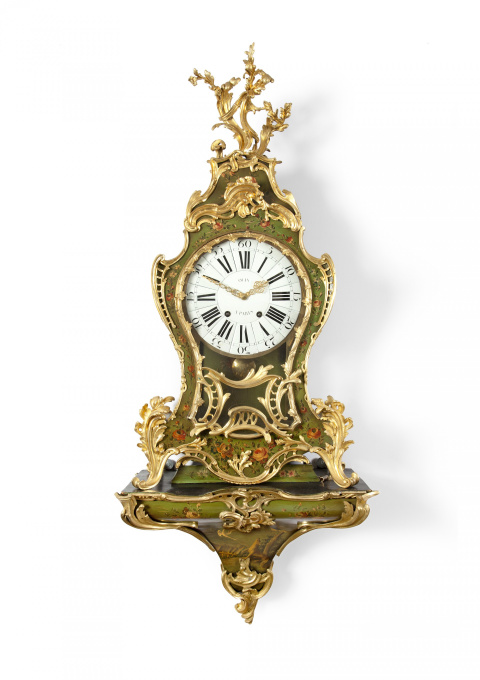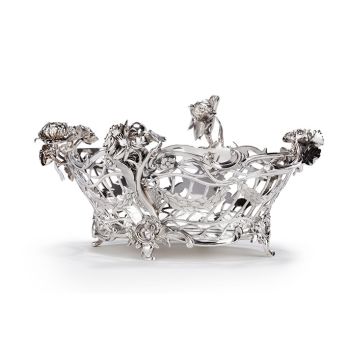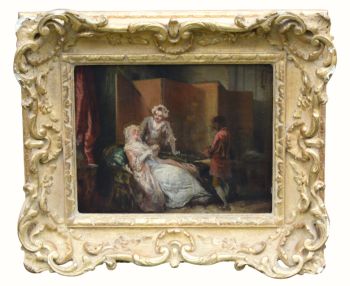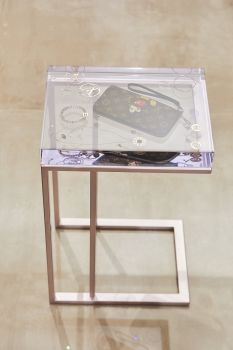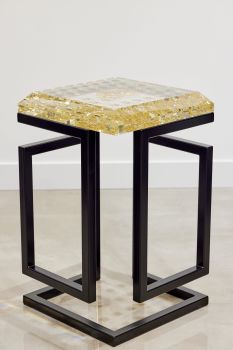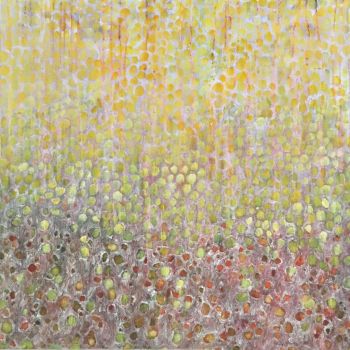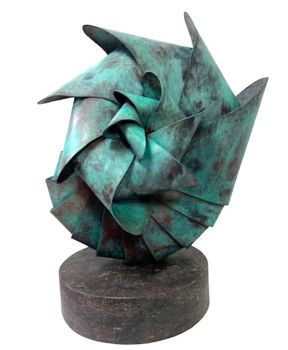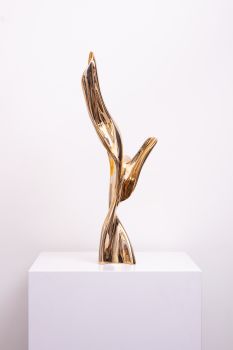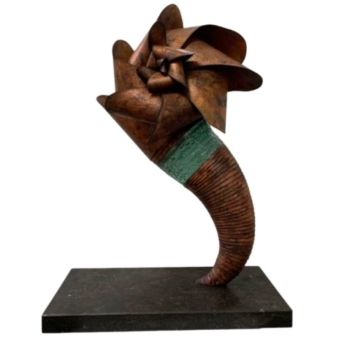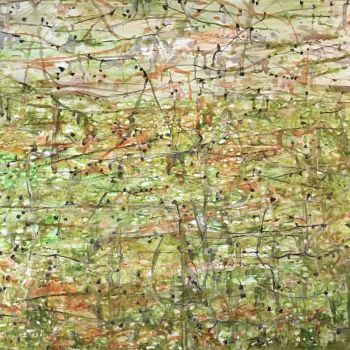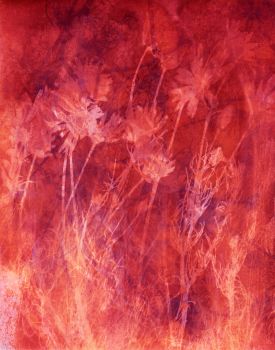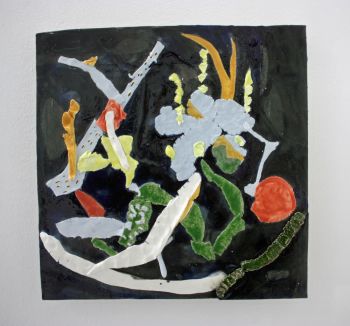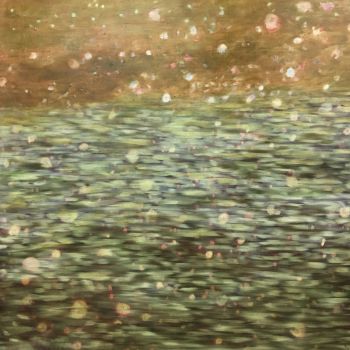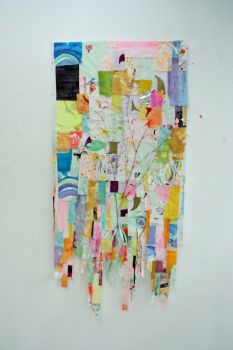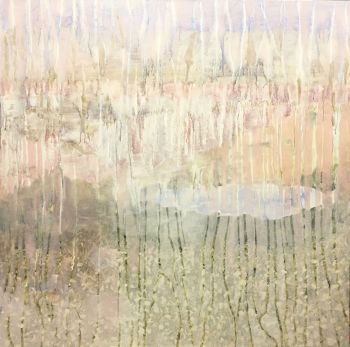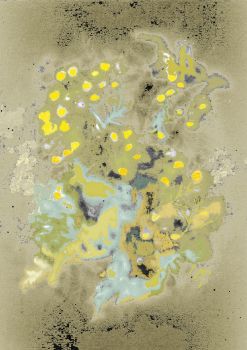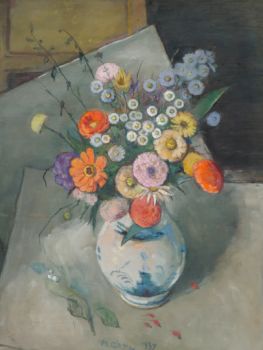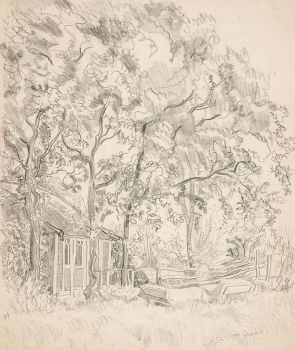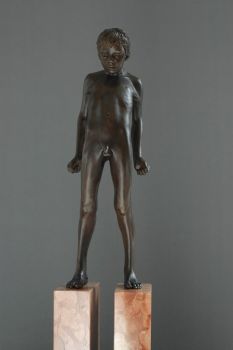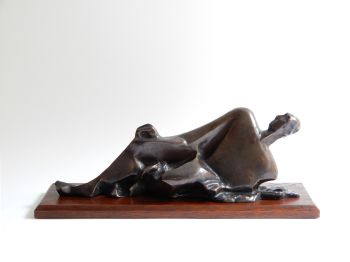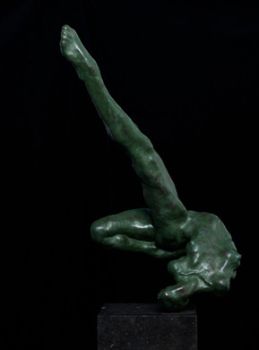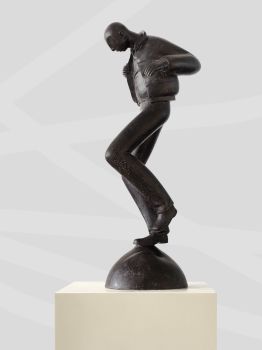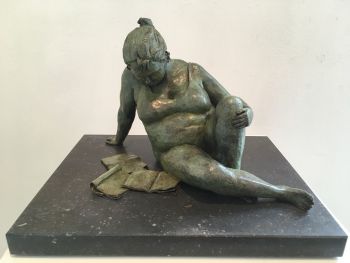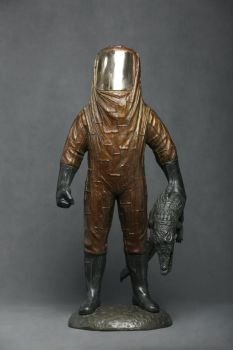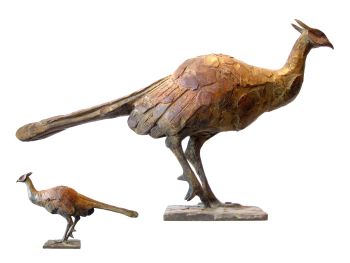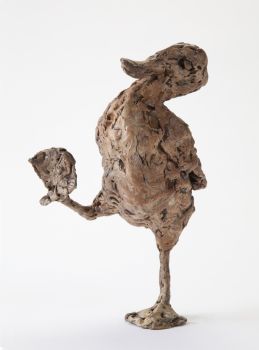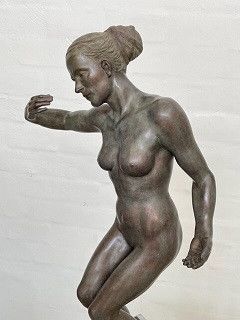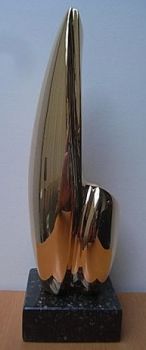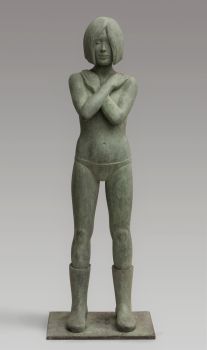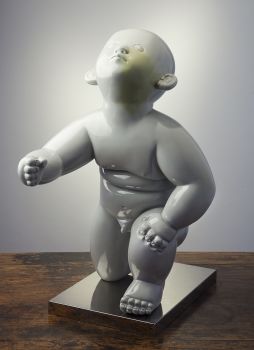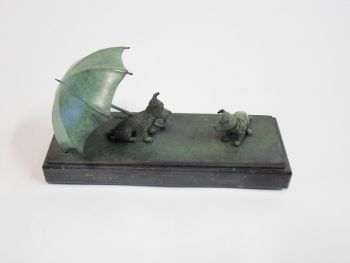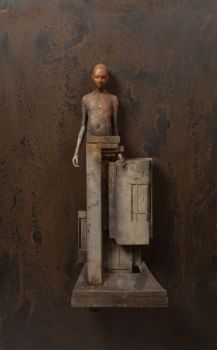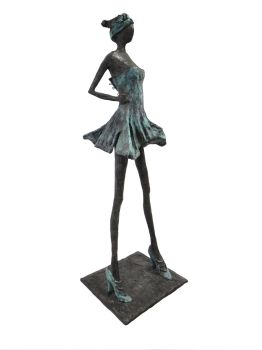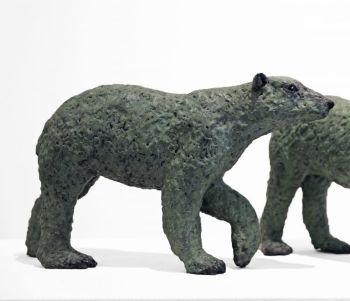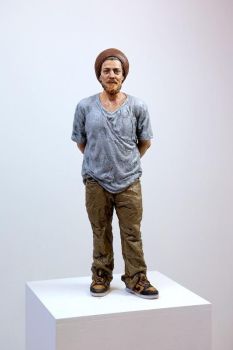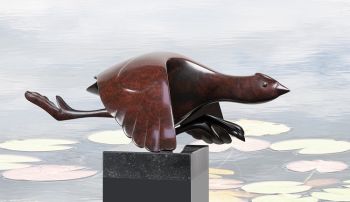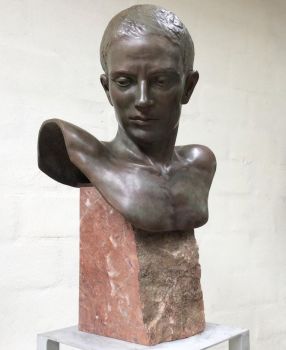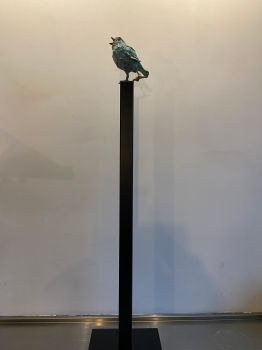A Louis Quinze Console Clock 'Grand Cartel' late 18th
Jean-Charles Olin
BronceOroMetalEsmalteDorado
150 ⨯ 61 ⨯ 30 cm
Actualmente no disponible a través de Gallerease
- Sobre la obra de arteA LOUIS XV CONSOLE CLOCK ‘GRAND CARTEL’
signed on the dial ‘olin à paris’ | 3rd quarter 18th century | 150 x 61 x 30 cm
A Louis XV ormolu mounted vernis Martin console clock, ‘grand cartel’, signed on the white dial ‘olin à paris’. White enamel chapters surround the centre pierced ormolu hands. The case is decorated overall Vernis Martin with flowers and on the console is depicted a scene taken from ‘Fables de La Fontaine’, ‘Le coq et le renard’.
In French interior design, vernis Martin is a type of imitation lacquer named after the French brothers Guillaume and Etienne-Simon Martin. It imitated Chinese lacquer and European subjects and was applied to a wide variety of items, from furniture to coaches. It is said to have been made by heating oil and copal and then adding Venetian turpentine.
Jean-Charles Olin’s (d. after 1789) name is associated with a number of examples. Notably a Louis XV gilt bronze mounted Meissen porcelain pendule ‘à l’éléphant’ in the Rijksmuseum, Amsterdam and another clock housed at Schloss La Fasanerie, Fulda. Olin first worked as an ouvrier libre but was received as a maître-horloger in October 1776. He served as deputé of his guild later in 1777. Olin used some of the best Parisian case makers. They included the ébéniste Antoine Foullet, the ébéniste doreur Jean Goyer and the esteemed bronzier Jean-Joseph de Saint-Germain.
Jean de La Fontaine was a French poet and fabulist, who lived and worked during the 17th century. For special contributions to French literature he was elected to the French Academy of Sciences in 1684. Published in 1668, the collection of fables brought La Fontaine international fame. The works of the ancient Greeks, Indian storytellers, other fabulists and folk tales about animals serve as a source of inspiration for the author. Drawing motives from these works, La Fontaine brought new life to the fable genre. - Sobre el artistaJean-Charles Olin (muerto después de 1789) fue uno de los relojeros parisinos más importantes de finales del siglo XVIII. Cuñado del relojero Jean-Gabriel Imbert, inicialmente trabajó de forma independiente, luego se convirtió en maestro en 1776 y abrió su propio taller en el enclos des Quinze-Vingts. Con una reputación en rápido crecimiento, en 1777 fue elegido diputado de su corporación. Como los mejores relojeros de su tiempo, buscó a los mejores bronceadores para sus cajas de relojes, incluidos Antoine Foullet, Robert Osmond y Jean-Joseph de Saint-Germain. Sus relojes fueron adquiridos por algunos de los coleccionistas más importantes del siglo XVIII. Los relojes de Olin se mencionan en los inventarios de sucesiones del abogado Jacques-Augustin Auvray, de Marie-Philippe Donneau, el marqués de Visé y la viuda del secretario del rey Louis Paris de Treffonds.
Artwork details
Categoría
Tema
Estilo
Material y Técnica
Colour
Related artworks
Artista Desconocido
A Surinam-themed Amsterdam long-case clock1746 - 1756
Precio a consultarZebregs & Röell - Fine Art - Antiques
 curada por
curada porGallerease Magazine
1 - 4 / 17Artista Desconocido
UN MODELO JAPONÉS DE UN NORIMONO, UN PALANQUÍN1650 - 1700
Precio a consultarZebregs & Röell - Fine Art - Antiques
Artista Desconocido
UN NETSUKE DE MARFIL DE UN HOLANDÉS CON UNA COCKEREL18th century
Precio a consultarZebregs & Röell - Fine Art - Antiques
1 - 4 / 24- 1 - 4 / 24
- 1 - 4 / 24

